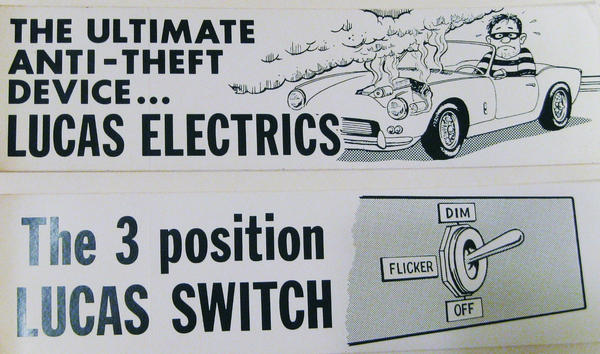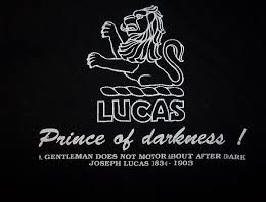mmcartalk
Expert
- Messages
- 4,159
- Reactions
- 2,675
MM Retro/Current Write-Up: Mazda Miata/Fiat 124 Spyder


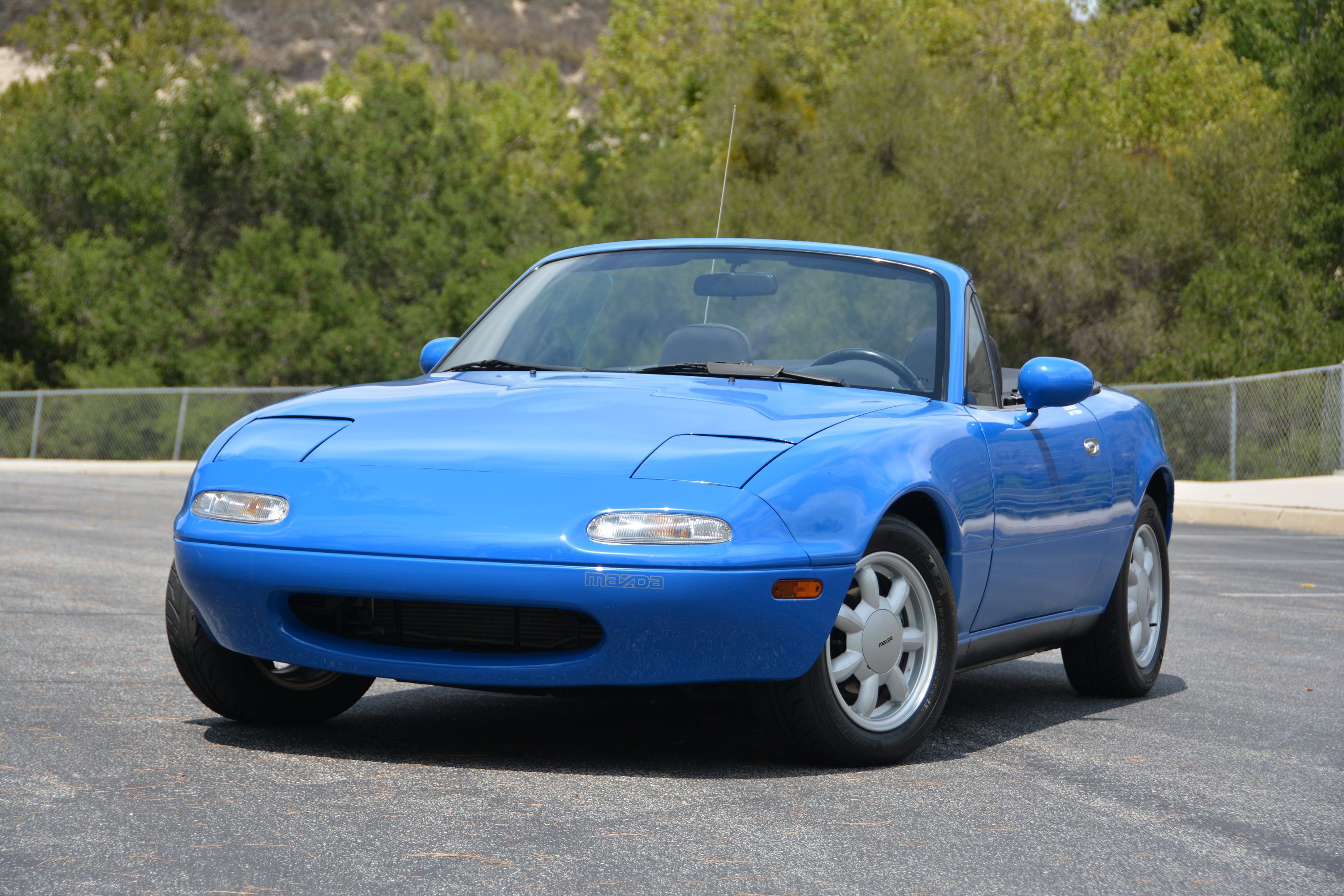
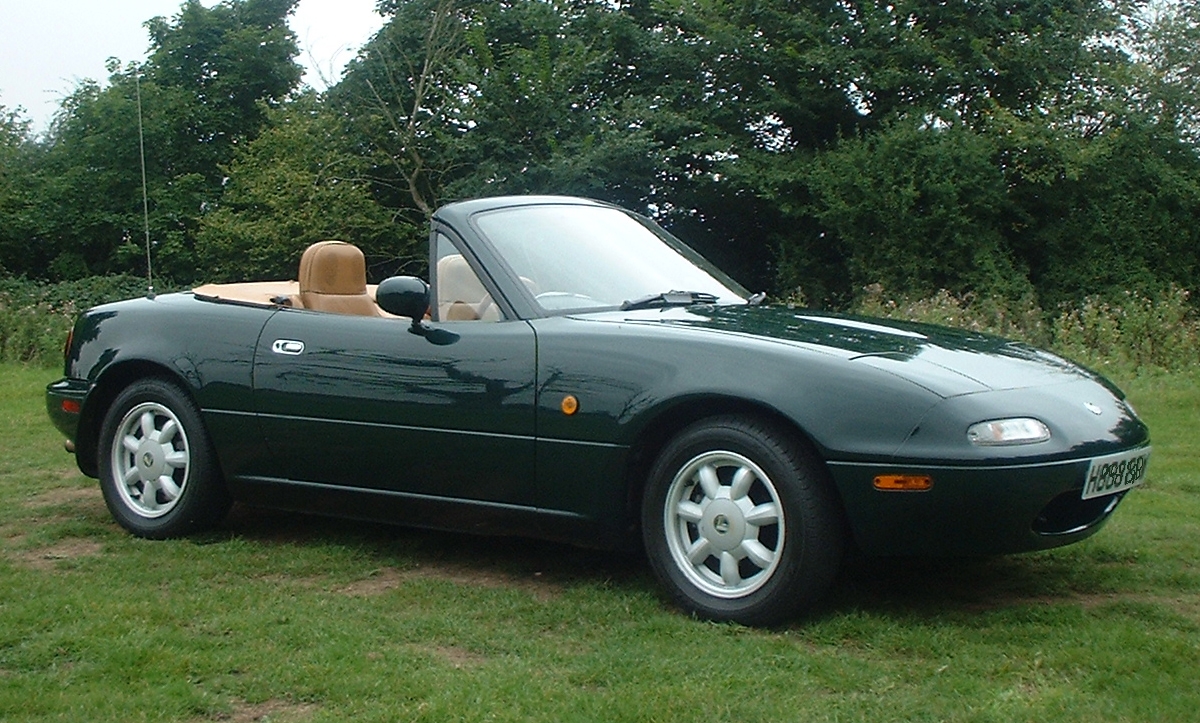


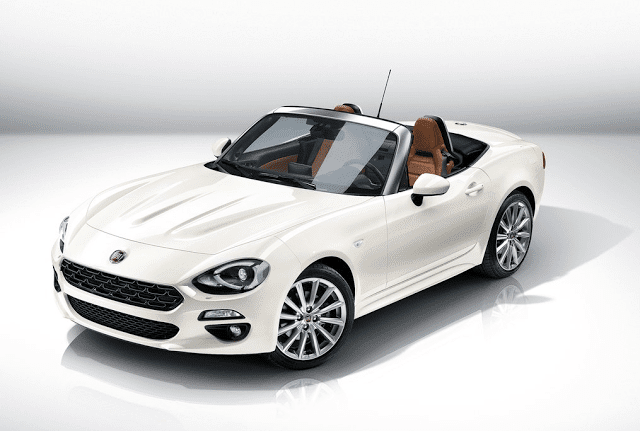

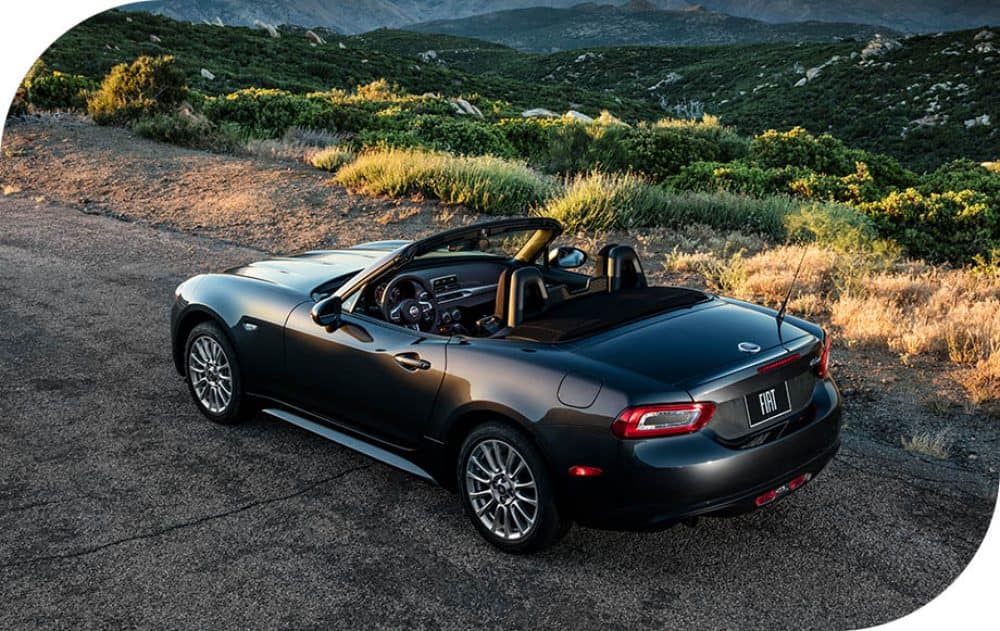

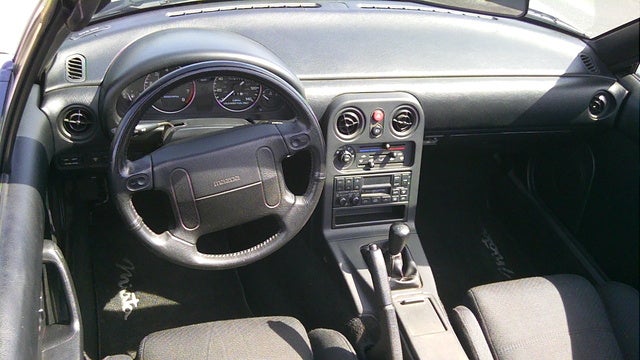
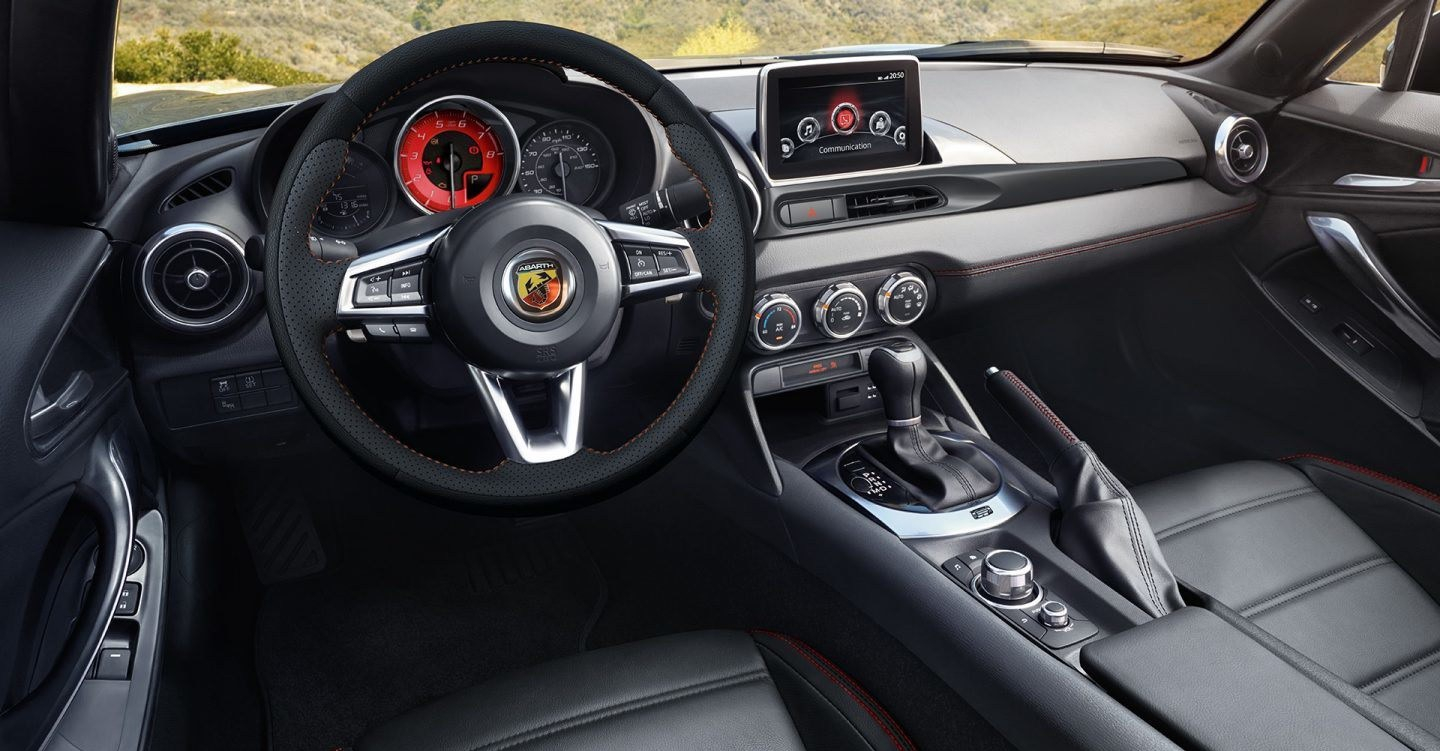
^^^^^^ 124 Spyder Abarth Interior
IN A NUTSHELL: Arguably the most successful roadster of all time....for a reason.
Those of you who are old enough (as I am, but just barely) to remember the classic 2-seat British roadsters of the 1950s/1960s (Austin-Healey, Triumph, MG, Cunningham, AC, Jaguar, etc....) will probably remember how much fun they could be to drive on a nice day...but also their quirkiness and unreliability. The nice wind-in the-hair experience (for those who still had hair LOL), sun-tanned face, the roar of the generally small in-line fours in those pre-emission days, the precise-shifting gearboxes (though sometimes without synchronizers, which could lead to crunching), the instant response from the nicely-done wooden steering wheels, the clear, legible no-nonsense gauges for everything, and their generally memorable driving experience led to a romantic image. However, that had to be balanced against the cold (sometimes literally cold) reality of drafty side curtains that let the rain in like Niagara Falls, hard-throttle noise levels that could rival those of a battlefield, Bounce-O-Matic ride comfort over bumps, squeezing in and out of them like a pretzel (although we were a lot younger, slimmer, and more lithe back then), constantly failing seals/gaskets that would let more engine/drivetrain fluids stay on the ground than in the car itself. And, Oh Yes, need I mention the British Lucas electrical systems?...The standing joke was "I drove my Jaguar all the way across the country, and it only caught fire once".
Many of these delights, and quirks/unreliability, were also characteristic of the Italian roadsters of the period (primarily Bertone/Fiat/Lancia Spyders), although, perhaps from some lingering anti-Italian sentiment among the American public left over from World War II, the Italian roadsters did not have the same popularity, or achieve the same level of sales, as the British roadsters did. Indeed, a number of the British roadsters of the period were brought into the U.S., after the war, by American GIs who had bought them in Britain (our former ally) and had the military ship them over when they came back home. That is, of course, when the auto factories in Britain actually began building vehicles for civilians again...wartime vehicle-production, of course (as in the U.S.) had been mostly for the military, and gas had been heavily-rationed.
So, despite the romantic image/hype of these cars that still, to some extent, remains today, they clearly were a two-edged sword, and, by the 1970s, sales were sharply declining. One by one, they were dropped from the American market, and Triumph, with its wedge-shaped TR-7/TR-8, some versions of which were powered by a small 3.5L aluminum Buick-sourced V8, was the last one to remain in the U.S., being dropped after 1981. So, in the U.S., the sun set on the roadster portion of the British Empire.
But, it was to rise again, at the very end of that decade, from the Land of the Rising Sun itself.....Japan. The oldest of the postwar Baby Boomers, by that time, were starting to feel the effects of middle-age/mid-life crisis, and enough of them (not to mention the auto-press itself) longed for a reliable and affordable two-seat roadster, one that would not give them headaches like those of 20-30 years before, that the marketers at Mazda came up with a brilliant idea. Why not take Mazda's resources (the company, at that time, was starting to get large infusions of money and capital from the Ford takeover), and do a small, classic RWD "British" two-seat roadster in the postwar mode, with Japanese-production reliability, decent weather-sealing, an easy-to-use top-folding mechanism, and would allow its owners to go out for a nice refreshing drive without having to repair their cars each time they did so. After all, Mazda, like most Japanese companies of the period, not only was well-known for the high quality of their products, but also specialized in vehicles that emphasized so-called "Driving Dynamics" and "Kanzai Engineering" which was focused on how they actually felt to the driver behind the wheel, not just simply motorized Buzz-Boxes that got the driver from Point A to Point B and little else.
The result was truly classic....one of the most significant sports-car/roadster introductions of all time, although at that time, its long term implications were still unknown. The First-Generation Mazda Miata appeared at the 1989 Chicago Auto Show, and, if my memory is correct, debuted in July of that year as a 1990 model. Although primarily aimed at the market of the former British roadsters, the car's name "Miata", though actually from German descent, had an Italian ring to it, and also appealed to those who had formerly driven Italian roadsters. Demand for the new Miata was enormous, along, of course, with what often (unfortunately) happens under those kinds of circumstances....dealer price-gouging. I say "gouging", though, with a grain of salt, because some people simply consider that part of supply/demand business..and this is probably not the place to argue economics. Honda, with the CRX, by then, had a nominal two-seat competitor that was firmly-established in the market (see my earlier write-up on the CRX). But the CRX was an altogether different puppy. Being FWD, a somewhat slower ratio in the steering-rack, relatively weak brakes, and a fastback/hatchback design instead of a convertible/roadster, its chief advantages over the Miata were more cargo space behind the seats and the extra winter traction of the FWD. But that wasn't what Miata buyers were looking for, and the CRX, itself admittedly a cult-car, ended up appealing more to the tuner and commuter-crowds than those of traditional roadsters. Honda tried another approach, in the early 1990s, replacing the CRX with the semi-convertible Del Sol, but it had some structural-integrity problems, and was generally a sales-flop.
The Miata, of course, went on to become a legend. The long-held stereotype is that, partially because of its relatively low power level (initial versions had a 1.6L 116 HP non-turbo in-line four), it was a so-called "Feminine" car, in the mold of VW Cabrios/convertibles, but I disagree. Yes, I've seen a lot of females driving them, but also a fair amount of males as well...and one of those males (name withheld for privacy reasons) was actually a trainee of mine, whom my bosses at work had assigned me to train after he was hired. He had a BRIGHT blue one...the stunning Mariner Blue paint-option that you could see on it a mile away.
I never actually owned a Miata, but have test-driven numerous versions of them (unfortunately, not the turbo MazdaSpeed version) and have ridden in them with friends and co-workers....getting enough feel and experience with them that I think I can do a reasonable write-up. As a pure, non-nonsense, inexpensive sports-car, it was clearly the cream of the crop, finding a place on Car & Driver's Ten Best List, year after year, for decades....and still, today, very highly regarded by that magazine's (and other enthusiast-magazine's) staff.
One of my favorite experiences with Miatas actually doesn't involve driving at all, but being at the D.C. Auto Show I visit each year, usually for three or four days. The show, for me, is simply too big to see everything in detail in one day, and my not-so-young back/legs simply cannot take being on them for eight or more hours at a stretch like they could years ago. So, to compensate (and since I usually get free show tickets from local dealerships anyway), I go on multiple-days, usually for about 3-5 hours at a time or so....with frequent rests/sit-downs. When I get to the Mazda display, after checking out their other latest products each year, I'll head over to the Miatas, since they usually have at least one with a soft-top and one with a power-hardtop. I'll shoehorn myself, and the bag I carry at the show, into the soft-top, and proceed, for those interested, to demonstrate the ingenious simplicity of the manually-folding roof. Whoever designed the Miata's roof-folding mechanism should, IMO, have gotten not only an award and/or promotion from the company, but a funded-early-retirement as well. The tough fabric roof is not only well-made, well-sealed, and durable by ragtop standards, but is also, far and away, the easiest to raise/lower manually that I have ever seen on a convertible.....particularly after struggling with the monstrosity of a mechanism that GM put into the (formally-Miata-competitor) Pontiac Solstice/Saturn Sky roadster. With early Miatas, there were two snap-levers under the windshield header...later versions had only one, in the middle. When you want to lower the top, simply reach up, unsnap the lever, take your hand and push the top-fold back up and over your head, and let gravity drop it back down, behind you, into the compartment behind the seats. The way the top is designed to fold, the plastic grab-handle built into it will be sticking out just behind you.....when you want to raise it again, simply grab the handle, pull the top back up, forward, over your head (there is some small mechanical-resistance and from gravity, but not much), and snap the single lever lever back into the its place onto windshield-header...that's it. Bingo. Safe, simple, and secure.....a monkey could do it. What's more, no worries about sunroof or convertible-top motors/mechanisms failing just as the sky turns dark to the West and the National Weather Service issues a storm warning. Of course, for those with arms/shoulders/hands that are weak or injured, or prefer the added security of a hard top, or, for any reason, prefer to have electrics do the work for them, Third-Generation Miatas introduced a power-folding hardtop, and current-generation Miatas include the hardtop/convertible RF model. The Miata, even today, inevitably draws a fair number of onlookers at the D.C. show (always has), and the Mazda reps at the show like the fact that Marshall is doing their jobs for them showing off the roof, which leaves more time for them to tend to other things on the floor...or to go get coffee LOL. People have timed me.....I can unsnap and flip a typical Miata roof all the way open in around three seconds, and raise it back up and re-snap it in three to four seconds. Of course, if someone on the floor wants to try the roof out for themself (after all, they are the ones that will be buying the car, not me), I'll shoehorn myself and my bag OUT of the Miata and let them take a stab at it...it usually puts a smile on their face.

A number of different versions/Special-Production models of the Miata were done over the years, some with special colors/trim-patterns like in British Racing Green and tan leather interior, for those who so fondly remembered their old British roadsters. As I mentioned previously, Miatas with non-turbo engines were never considered powerhouses, although HP and torque was gradually increased over the years, and the in-line fours tended to be somewhat peaky, meaning that there was little relatively torque at low RPM, but, as the tach reached 3500 or so and swung towards 4000 (particularly above 4000) you began to feel that push in the back. For those wanting more spunk under the hood, Mazda did build a number of turbo MazdaSpeed versions in 2004/2005, but it was never intended (or designed) to a high-powered sports-car.....simply a modern, reliable version of inexpensive old-time British/Italian roadsters. And, even than, the MazdaSpeed versions weren't that impressive in the power department.....178 HP and 166 ft-lbs. of torque.
With the car's extremely low stance and cramped interior, Miatas generally aren't designed for NBA guys. I'm 6' 2", 280 lbs., and, with some bending/making like a pretzel, manage to get in and out of them, if not exactly easily, at least without too much difficulty. One person I know (a former owner) said he was 6' 3", drove his Miata regularly for some time, and generally didn't have any problems getting in and out...he is slimmer than me. One, however, purchases or leases a car like this knowing that it is not a Chevy Suburban, and that tight interiors are a more or less normal feature of small two-seaters. I find that what works best for me is to have my legs pointing out the side of the car at a 90-degree angle, and simply drop my butt back down into the seat or pull/push myself up and put. The steering column is low, and, even up-tilted, I find my big legs have to more more or less splay around the sides of the wheel-rim and bend back to reach the accelerator/brake/clutch pedals. The fore/aft and seat-back/rake movements of the front seat are very limited because of the roof-compartment behind the seat, and, unlike in most other vehicles with rear seats, you have to simply find the best compromise between the two that will fit your torso and leg's needs. I will also note, however, after years of test-driving a number of Miatas, that interior room has (slightly) increased with each succeeding generation/redesign, and climbing in and out has also become a little easier...but, for me, still tight.
But, once you get in, everything strapped up and adjusted, and start the engine, driving this car is a trip. It has not won the numerous awards it has for nothing. Of course, with its light weight and RWD, it is not a vehicle for winter traction, but, in nice weather, it has few if any equals for an exhilarating open-top (or even closed-top) experience on the road....as long as you aren't doing a coast-to-coast route, where its noise level and firm ride can get tiring on a long trip. But this car was not designed for quiet luxo-cruising...if you want that, go get a vehicle designed for it. I myself enjoy this kind of driving once in a while, but it is not something I'd want to go through every day (not to mention the somewhat difficult entry/exit).....which is why I have never owned a Miata, although I still have a ton of respect for this car when used for what it was designed for. Though they have naturally gotten more complex over the years, Miata gauges/controls in most cases are still relatively simple, clear, easy to use, and no-nonsense...a Miata driver should not have to waste time, with complex systems, trying to figure out how to do simple things that should be done in just a second or two. Handling response, with the car's 50/50 weight balance, is classic-neutral and instant, though adding my big frame to the driver's side of this light car may alter the balance somewhat LOL. As mentioned, road noise, wind noise, and engine noise are all considerable by today's standards, though it has lessened a little on the newest models with the fabric top, which, with top up, somewhat better-insulates now than on early models. The clutch and manual transmission, with its extremely short throws and great precision, is designed for quick and accurate shifting.....indeed, IMO, unless someone has a significant leg, foot or right-arm problem, to drive this car with an automatic (one is available, if desired) is probably a sacrilege.
But, perhaps my favorite version of the Miata did not carry a Japanese nameplate at all, but was the Fiat 124 Spyder version, marketed after that company had returned to the American market from a roughly 25-year absence. Unlike other Italian-designed Fiats (which ranked at the bottom of the barrel for reliability), the Spyder was a Japanese-engineeered/produced Miata platform using a slightly more powerful Italian-sourced MultiAir turbo power plant....so, while engine-durability might be questionable, the rest of the car would be reliable. It is built in the same Mazda-owned Hiroshima, Japan plant (rebuilt after the atomic-bomb), by the same workers and equipment, as the Miata itself. The Spyder, IMO, had significantly better looks than the the Miata it was based on, with some Italian styling touches fore and aft. But, unfortunately, perhaps because of the bottom-barrel reputation of Fiat reliability (which, ironically, doesn't necessarily affect the Spyder), the Spyder was clearly a sales-flop in the U.S., and was pulled from the American market last year (2019). One person I know also owned a Spyder, and did not like it because of its noise-level, so, of course, I respect other viewpoints. But I still think it was clearly the best-looking of all the Miata variants over the years.
And, as Always, Happy Car-Memories.....although of course, the Miata is still in production today.

MM
__________________

DRIVING IS BELIEVING












^^^^^^ 124 Spyder Abarth Interior
IN A NUTSHELL: Arguably the most successful roadster of all time....for a reason.
Those of you who are old enough (as I am, but just barely) to remember the classic 2-seat British roadsters of the 1950s/1960s (Austin-Healey, Triumph, MG, Cunningham, AC, Jaguar, etc....) will probably remember how much fun they could be to drive on a nice day...but also their quirkiness and unreliability. The nice wind-in the-hair experience (for those who still had hair LOL), sun-tanned face, the roar of the generally small in-line fours in those pre-emission days, the precise-shifting gearboxes (though sometimes without synchronizers, which could lead to crunching), the instant response from the nicely-done wooden steering wheels, the clear, legible no-nonsense gauges for everything, and their generally memorable driving experience led to a romantic image. However, that had to be balanced against the cold (sometimes literally cold) reality of drafty side curtains that let the rain in like Niagara Falls, hard-throttle noise levels that could rival those of a battlefield, Bounce-O-Matic ride comfort over bumps, squeezing in and out of them like a pretzel (although we were a lot younger, slimmer, and more lithe back then), constantly failing seals/gaskets that would let more engine/drivetrain fluids stay on the ground than in the car itself. And, Oh Yes, need I mention the British Lucas electrical systems?...The standing joke was "I drove my Jaguar all the way across the country, and it only caught fire once".
Many of these delights, and quirks/unreliability, were also characteristic of the Italian roadsters of the period (primarily Bertone/Fiat/Lancia Spyders), although, perhaps from some lingering anti-Italian sentiment among the American public left over from World War II, the Italian roadsters did not have the same popularity, or achieve the same level of sales, as the British roadsters did. Indeed, a number of the British roadsters of the period were brought into the U.S., after the war, by American GIs who had bought them in Britain (our former ally) and had the military ship them over when they came back home. That is, of course, when the auto factories in Britain actually began building vehicles for civilians again...wartime vehicle-production, of course (as in the U.S.) had been mostly for the military, and gas had been heavily-rationed.
So, despite the romantic image/hype of these cars that still, to some extent, remains today, they clearly were a two-edged sword, and, by the 1970s, sales were sharply declining. One by one, they were dropped from the American market, and Triumph, with its wedge-shaped TR-7/TR-8, some versions of which were powered by a small 3.5L aluminum Buick-sourced V8, was the last one to remain in the U.S., being dropped after 1981. So, in the U.S., the sun set on the roadster portion of the British Empire.
But, it was to rise again, at the very end of that decade, from the Land of the Rising Sun itself.....Japan. The oldest of the postwar Baby Boomers, by that time, were starting to feel the effects of middle-age/mid-life crisis, and enough of them (not to mention the auto-press itself) longed for a reliable and affordable two-seat roadster, one that would not give them headaches like those of 20-30 years before, that the marketers at Mazda came up with a brilliant idea. Why not take Mazda's resources (the company, at that time, was starting to get large infusions of money and capital from the Ford takeover), and do a small, classic RWD "British" two-seat roadster in the postwar mode, with Japanese-production reliability, decent weather-sealing, an easy-to-use top-folding mechanism, and would allow its owners to go out for a nice refreshing drive without having to repair their cars each time they did so. After all, Mazda, like most Japanese companies of the period, not only was well-known for the high quality of their products, but also specialized in vehicles that emphasized so-called "Driving Dynamics" and "Kanzai Engineering" which was focused on how they actually felt to the driver behind the wheel, not just simply motorized Buzz-Boxes that got the driver from Point A to Point B and little else.
The result was truly classic....one of the most significant sports-car/roadster introductions of all time, although at that time, its long term implications were still unknown. The First-Generation Mazda Miata appeared at the 1989 Chicago Auto Show, and, if my memory is correct, debuted in July of that year as a 1990 model. Although primarily aimed at the market of the former British roadsters, the car's name "Miata", though actually from German descent, had an Italian ring to it, and also appealed to those who had formerly driven Italian roadsters. Demand for the new Miata was enormous, along, of course, with what often (unfortunately) happens under those kinds of circumstances....dealer price-gouging. I say "gouging", though, with a grain of salt, because some people simply consider that part of supply/demand business..and this is probably not the place to argue economics. Honda, with the CRX, by then, had a nominal two-seat competitor that was firmly-established in the market (see my earlier write-up on the CRX). But the CRX was an altogether different puppy. Being FWD, a somewhat slower ratio in the steering-rack, relatively weak brakes, and a fastback/hatchback design instead of a convertible/roadster, its chief advantages over the Miata were more cargo space behind the seats and the extra winter traction of the FWD. But that wasn't what Miata buyers were looking for, and the CRX, itself admittedly a cult-car, ended up appealing more to the tuner and commuter-crowds than those of traditional roadsters. Honda tried another approach, in the early 1990s, replacing the CRX with the semi-convertible Del Sol, but it had some structural-integrity problems, and was generally a sales-flop.
The Miata, of course, went on to become a legend. The long-held stereotype is that, partially because of its relatively low power level (initial versions had a 1.6L 116 HP non-turbo in-line four), it was a so-called "Feminine" car, in the mold of VW Cabrios/convertibles, but I disagree. Yes, I've seen a lot of females driving them, but also a fair amount of males as well...and one of those males (name withheld for privacy reasons) was actually a trainee of mine, whom my bosses at work had assigned me to train after he was hired. He had a BRIGHT blue one...the stunning Mariner Blue paint-option that you could see on it a mile away.
I never actually owned a Miata, but have test-driven numerous versions of them (unfortunately, not the turbo MazdaSpeed version) and have ridden in them with friends and co-workers....getting enough feel and experience with them that I think I can do a reasonable write-up. As a pure, non-nonsense, inexpensive sports-car, it was clearly the cream of the crop, finding a place on Car & Driver's Ten Best List, year after year, for decades....and still, today, very highly regarded by that magazine's (and other enthusiast-magazine's) staff.
One of my favorite experiences with Miatas actually doesn't involve driving at all, but being at the D.C. Auto Show I visit each year, usually for three or four days. The show, for me, is simply too big to see everything in detail in one day, and my not-so-young back/legs simply cannot take being on them for eight or more hours at a stretch like they could years ago. So, to compensate (and since I usually get free show tickets from local dealerships anyway), I go on multiple-days, usually for about 3-5 hours at a time or so....with frequent rests/sit-downs. When I get to the Mazda display, after checking out their other latest products each year, I'll head over to the Miatas, since they usually have at least one with a soft-top and one with a power-hardtop. I'll shoehorn myself, and the bag I carry at the show, into the soft-top, and proceed, for those interested, to demonstrate the ingenious simplicity of the manually-folding roof. Whoever designed the Miata's roof-folding mechanism should, IMO, have gotten not only an award and/or promotion from the company, but a funded-early-retirement as well. The tough fabric roof is not only well-made, well-sealed, and durable by ragtop standards, but is also, far and away, the easiest to raise/lower manually that I have ever seen on a convertible.....particularly after struggling with the monstrosity of a mechanism that GM put into the (formally-Miata-competitor) Pontiac Solstice/Saturn Sky roadster. With early Miatas, there were two snap-levers under the windshield header...later versions had only one, in the middle. When you want to lower the top, simply reach up, unsnap the lever, take your hand and push the top-fold back up and over your head, and let gravity drop it back down, behind you, into the compartment behind the seats. The way the top is designed to fold, the plastic grab-handle built into it will be sticking out just behind you.....when you want to raise it again, simply grab the handle, pull the top back up, forward, over your head (there is some small mechanical-resistance and from gravity, but not much), and snap the single lever lever back into the its place onto windshield-header...that's it. Bingo. Safe, simple, and secure.....a monkey could do it. What's more, no worries about sunroof or convertible-top motors/mechanisms failing just as the sky turns dark to the West and the National Weather Service issues a storm warning. Of course, for those with arms/shoulders/hands that are weak or injured, or prefer the added security of a hard top, or, for any reason, prefer to have electrics do the work for them, Third-Generation Miatas introduced a power-folding hardtop, and current-generation Miatas include the hardtop/convertible RF model. The Miata, even today, inevitably draws a fair number of onlookers at the D.C. show (always has), and the Mazda reps at the show like the fact that Marshall is doing their jobs for them showing off the roof, which leaves more time for them to tend to other things on the floor...or to go get coffee LOL. People have timed me.....I can unsnap and flip a typical Miata roof all the way open in around three seconds, and raise it back up and re-snap it in three to four seconds. Of course, if someone on the floor wants to try the roof out for themself (after all, they are the ones that will be buying the car, not me), I'll shoehorn myself and my bag OUT of the Miata and let them take a stab at it...it usually puts a smile on their face.

A number of different versions/Special-Production models of the Miata were done over the years, some with special colors/trim-patterns like in British Racing Green and tan leather interior, for those who so fondly remembered their old British roadsters. As I mentioned previously, Miatas with non-turbo engines were never considered powerhouses, although HP and torque was gradually increased over the years, and the in-line fours tended to be somewhat peaky, meaning that there was little relatively torque at low RPM, but, as the tach reached 3500 or so and swung towards 4000 (particularly above 4000) you began to feel that push in the back. For those wanting more spunk under the hood, Mazda did build a number of turbo MazdaSpeed versions in 2004/2005, but it was never intended (or designed) to a high-powered sports-car.....simply a modern, reliable version of inexpensive old-time British/Italian roadsters. And, even than, the MazdaSpeed versions weren't that impressive in the power department.....178 HP and 166 ft-lbs. of torque.
With the car's extremely low stance and cramped interior, Miatas generally aren't designed for NBA guys. I'm 6' 2", 280 lbs., and, with some bending/making like a pretzel, manage to get in and out of them, if not exactly easily, at least without too much difficulty. One person I know (a former owner) said he was 6' 3", drove his Miata regularly for some time, and generally didn't have any problems getting in and out...he is slimmer than me. One, however, purchases or leases a car like this knowing that it is not a Chevy Suburban, and that tight interiors are a more or less normal feature of small two-seaters. I find that what works best for me is to have my legs pointing out the side of the car at a 90-degree angle, and simply drop my butt back down into the seat or pull/push myself up and put. The steering column is low, and, even up-tilted, I find my big legs have to more more or less splay around the sides of the wheel-rim and bend back to reach the accelerator/brake/clutch pedals. The fore/aft and seat-back/rake movements of the front seat are very limited because of the roof-compartment behind the seat, and, unlike in most other vehicles with rear seats, you have to simply find the best compromise between the two that will fit your torso and leg's needs. I will also note, however, after years of test-driving a number of Miatas, that interior room has (slightly) increased with each succeeding generation/redesign, and climbing in and out has also become a little easier...but, for me, still tight.
But, once you get in, everything strapped up and adjusted, and start the engine, driving this car is a trip. It has not won the numerous awards it has for nothing. Of course, with its light weight and RWD, it is not a vehicle for winter traction, but, in nice weather, it has few if any equals for an exhilarating open-top (or even closed-top) experience on the road....as long as you aren't doing a coast-to-coast route, where its noise level and firm ride can get tiring on a long trip. But this car was not designed for quiet luxo-cruising...if you want that, go get a vehicle designed for it. I myself enjoy this kind of driving once in a while, but it is not something I'd want to go through every day (not to mention the somewhat difficult entry/exit).....which is why I have never owned a Miata, although I still have a ton of respect for this car when used for what it was designed for. Though they have naturally gotten more complex over the years, Miata gauges/controls in most cases are still relatively simple, clear, easy to use, and no-nonsense...a Miata driver should not have to waste time, with complex systems, trying to figure out how to do simple things that should be done in just a second or two. Handling response, with the car's 50/50 weight balance, is classic-neutral and instant, though adding my big frame to the driver's side of this light car may alter the balance somewhat LOL. As mentioned, road noise, wind noise, and engine noise are all considerable by today's standards, though it has lessened a little on the newest models with the fabric top, which, with top up, somewhat better-insulates now than on early models. The clutch and manual transmission, with its extremely short throws and great precision, is designed for quick and accurate shifting.....indeed, IMO, unless someone has a significant leg, foot or right-arm problem, to drive this car with an automatic (one is available, if desired) is probably a sacrilege.
But, perhaps my favorite version of the Miata did not carry a Japanese nameplate at all, but was the Fiat 124 Spyder version, marketed after that company had returned to the American market from a roughly 25-year absence. Unlike other Italian-designed Fiats (which ranked at the bottom of the barrel for reliability), the Spyder was a Japanese-engineeered/produced Miata platform using a slightly more powerful Italian-sourced MultiAir turbo power plant....so, while engine-durability might be questionable, the rest of the car would be reliable. It is built in the same Mazda-owned Hiroshima, Japan plant (rebuilt after the atomic-bomb), by the same workers and equipment, as the Miata itself. The Spyder, IMO, had significantly better looks than the the Miata it was based on, with some Italian styling touches fore and aft. But, unfortunately, perhaps because of the bottom-barrel reputation of Fiat reliability (which, ironically, doesn't necessarily affect the Spyder), the Spyder was clearly a sales-flop in the U.S., and was pulled from the American market last year (2019). One person I know also owned a Spyder, and did not like it because of its noise-level, so, of course, I respect other viewpoints. But I still think it was clearly the best-looking of all the Miata variants over the years.
And, as Always, Happy Car-Memories.....although of course, the Miata is still in production today.

MM
__________________

DRIVING IS BELIEVING



